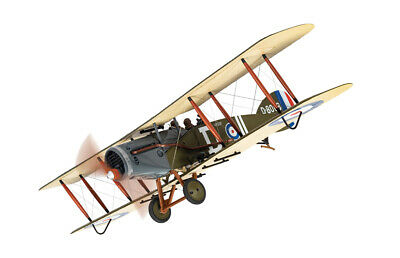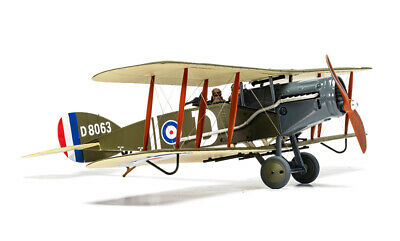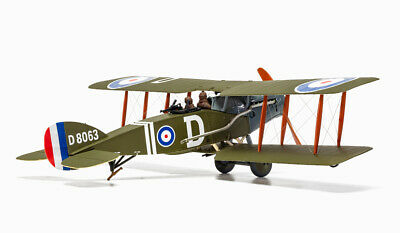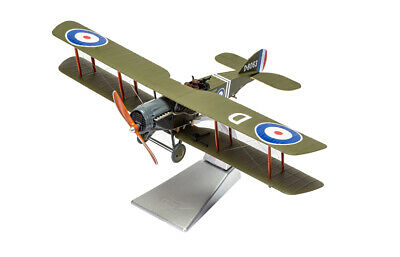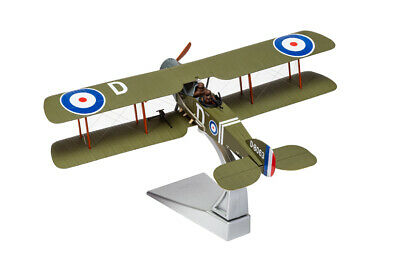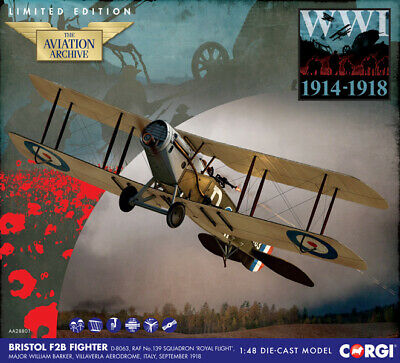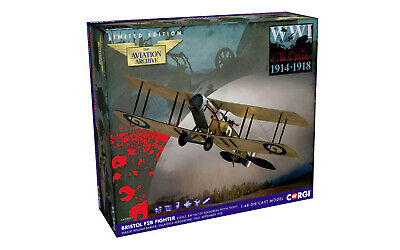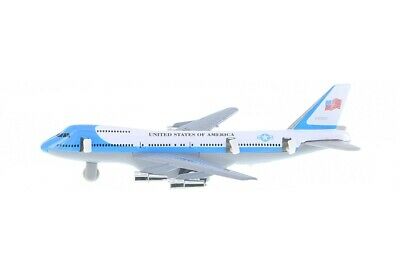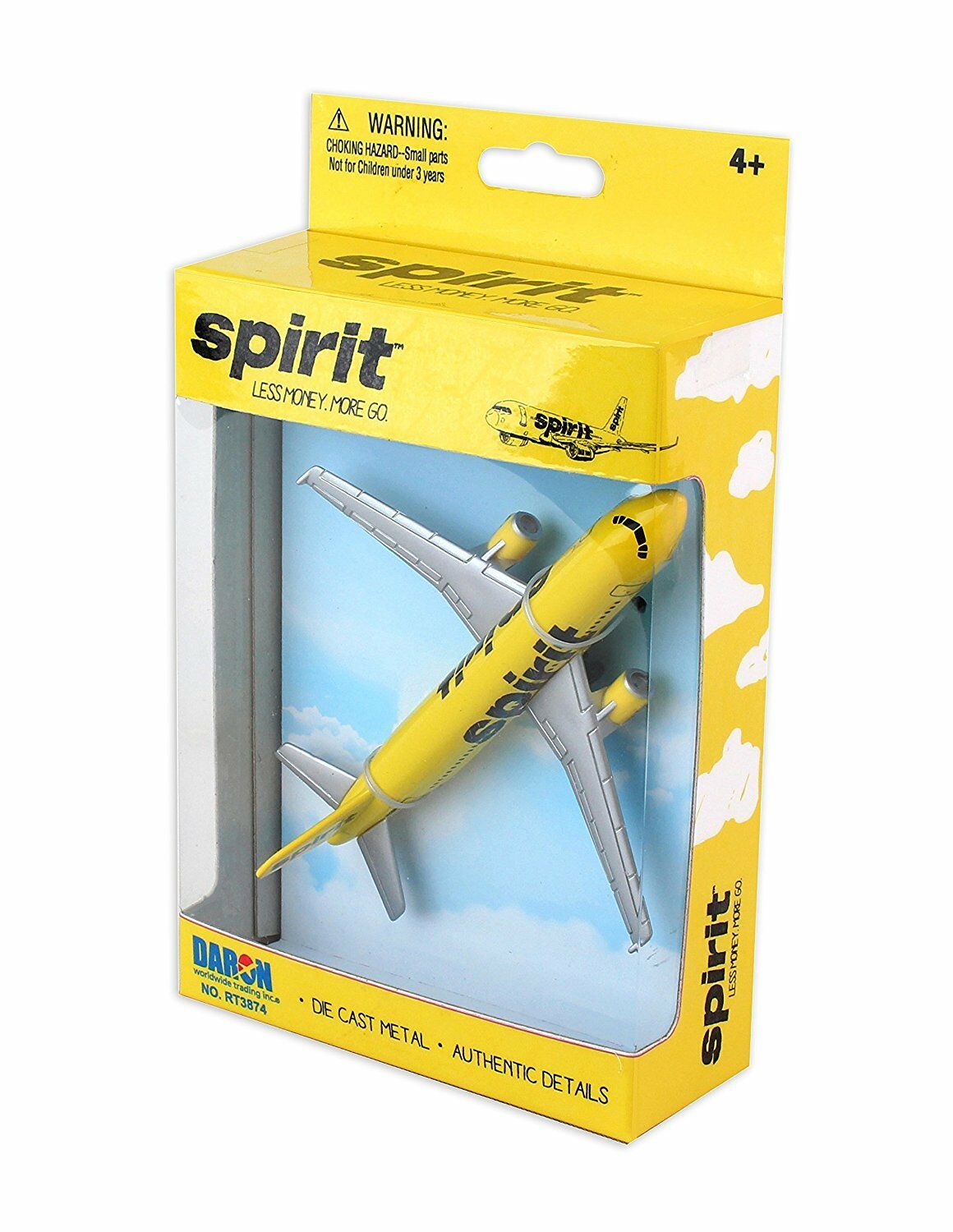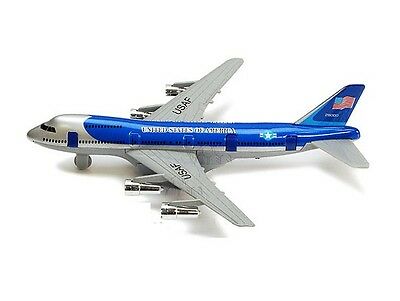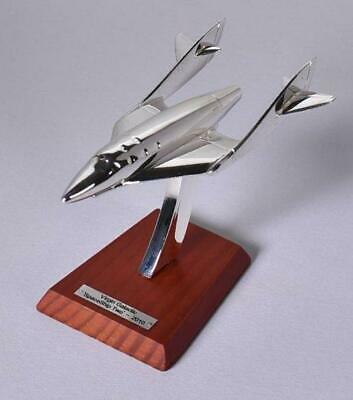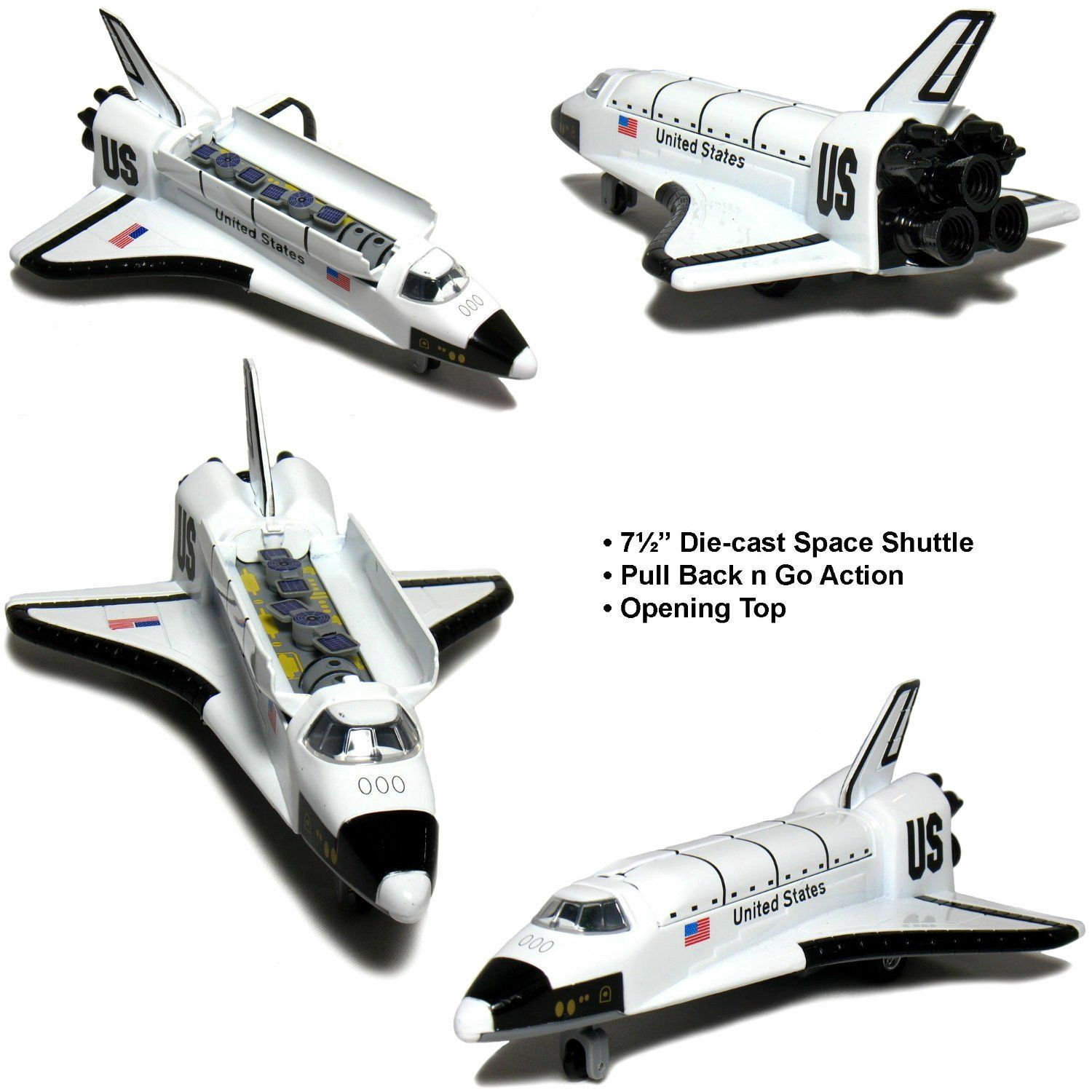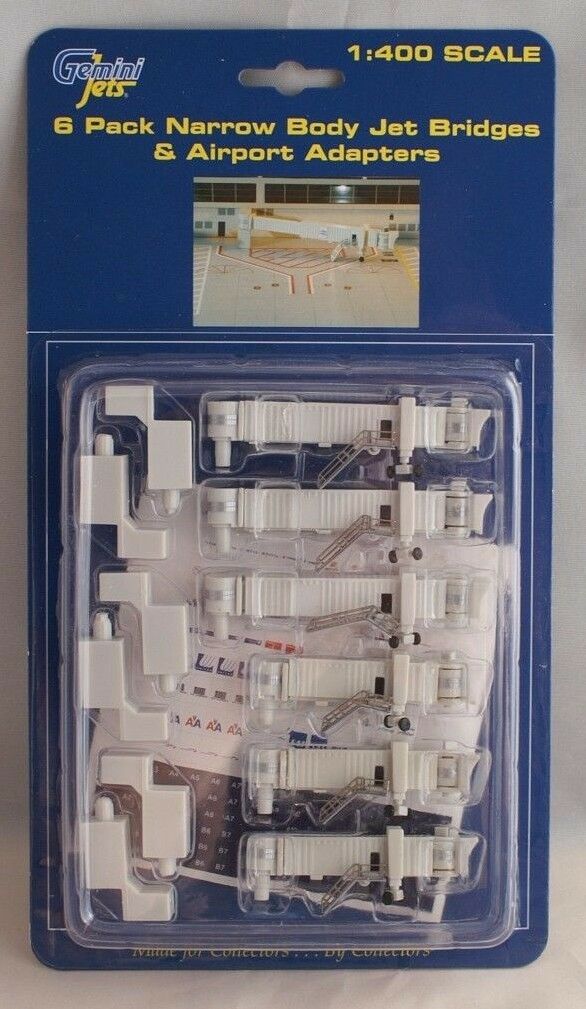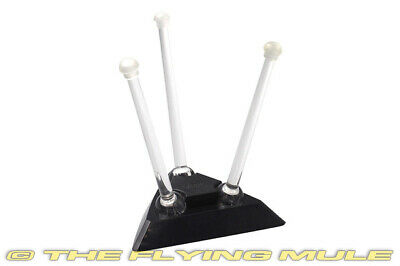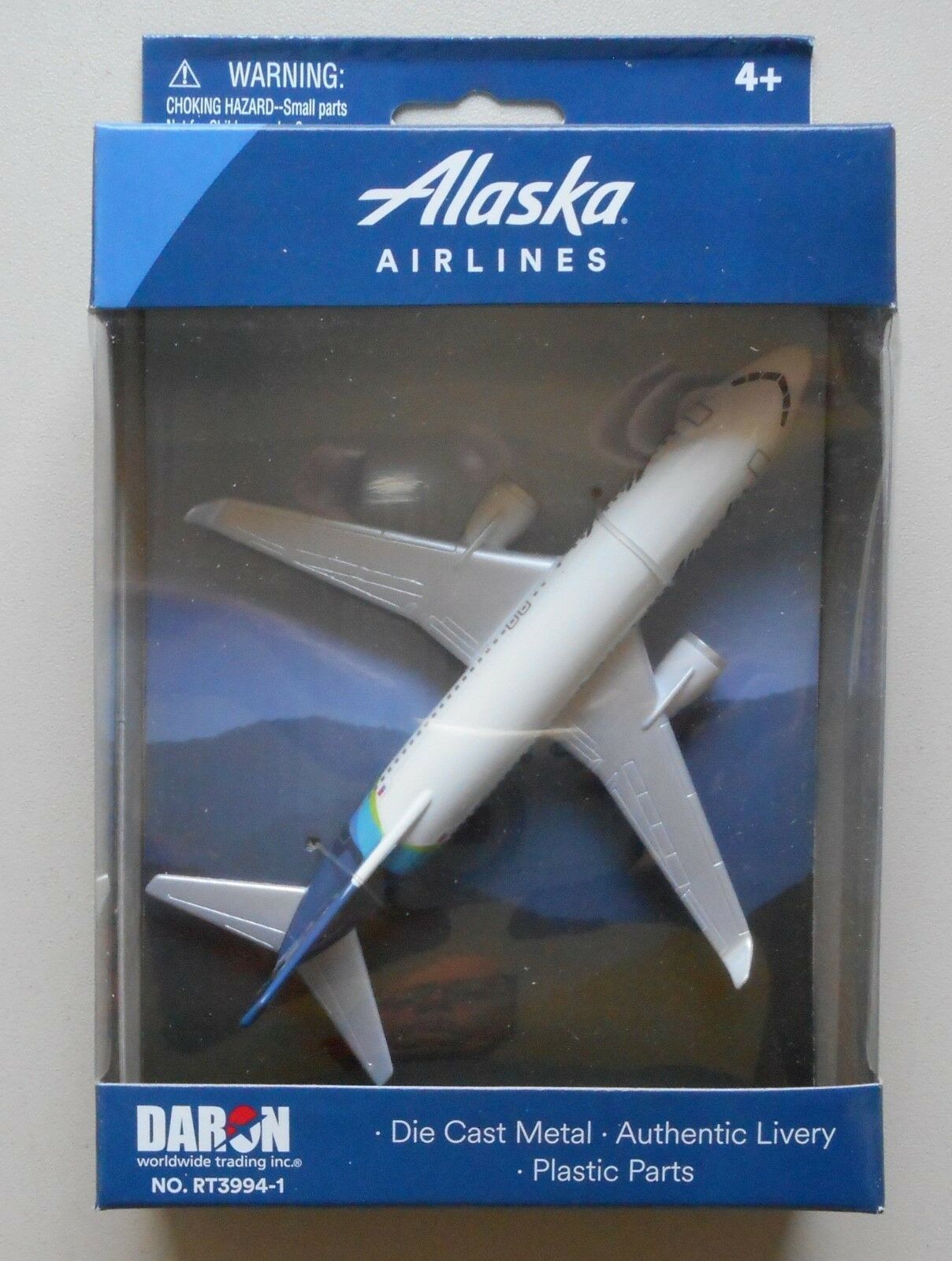-40%
Corgi 1:48 RFC Bristol F2B Fighter - D-8063, RAF No.139 Squadron, 1918, #AA28801
$ 55.43
- Description
- Size Guide
Description
"Aviation is proof that given, the will, we have the capacity to achieve the impossible."- Eddie Rickenbacker
The Bristol F.2 fighter was a British two-seat biplane fighter and reconnaissance aircraft of the First World War flown by the Royal Flying Corps. It is often simply called the Bristol Fighter or popularly the "Brisfit" or "Biff". Despite being a two-seater, the F.2B proved to be an agile aircraft that was able to hold its own against opposing single-seat fighters. Having overcome a disastrous start to its career, the F.2B's solid design ensured that it remained in military service into the 1930s, and surplus aircraft were popular in civil aviation.
The Bristol F.2 Fighter was armed in what had by then become the standard weapons configuration for a British two-seater military aircraft: one synchronized fixed, forward-firing .303 in (7.7 mm) Vickers machine gun (in this case mounted under the cowling to avoid freezing) and a single flexible .303 in (7.7 mm) Lewis Gun on a Scarff ring over the observer's rear cockpit.
The F.2B variant often carried a second Lewis gun on the rear cockpit mounting, although observers found the weight of the twin Lewis gun mounting difficult to handle in the high altitudes at which combat increasingly took place in the last year of the war, many preferring to retain a single gun.
Attempts were made to add a forward-firing Lewis gun on a Foster mounting or similar on the upper wing either instead of, or in addition to, the Vickers gun. Among other problems this caused interference with the pilot's compass, which was mounted on the trailing edge of the upper wing: to minimize this effect the Lewis gun was offset to starboard.
Pictured here is a 1:48 scale replica of a Royal Flying Corps Bristol F2B biplane fighter that was attached to the RAF No.139 Squadron, then deployed to Villaverla, Italy, during September 1918.
New for 2021!
#AA28801
Dimensions:
Length: 6-1/2-inches
Wingspan: 9-3/4-inches
Features:
- Diecast construction
- Realistic wire rigging
- Comes with seated pilot figure
- Comes with display stand
- Spinning propellers
- Accurate markings and insignia
Historical Account:
"Never to be so Foolish Again" - The outbreak of the Great War placed a moral burden on the shoulders of a young Edward, Prince of Wales, heir to the British throne. Desperate to do his duty and be seen alongside the thousands of troops heading for France, he was forbidden from joining his Grenadier Guards regiment at the front by Lord Kitchener, who was concerned about the potential damage his loss or capture would have on a nation at war. Nevertheless, over the course of the next four years, the Prince would regularly visit the trenches and was extremely popular among the fighting men of Britain. An early supporter of the airplane, the Prince is thought to have made several flights as a passenger whilst in France, however, an incident which reputedly occurred in September 1918 is quite astonishing. Whilst visiting No.139 Squadron in Italy, the Prince was taken on several flights in Bristol F2B Fighter D-8063 by celebrated Canadian ace and friend William Barker and on one such flight, it was reported that the Prince was taken close to the front lines, where he fired the aircraft's Lewis guns on enemy trenches.
On hearing of this unofficial action, the King was said to be furious and chastised his son, telling him 'never to be so foolish again'. Although the Bristol F2B Fighter would go on to be regarded as one of the finest fighting airplanes of the Great War, its combat introduction on the Western Front was inauspicious to say the least. Intended as a replacement for the much maligned Royal Aircraft Factory BE2c, the Bristol fighter was rushed into service so it could take part in the Second Battle of Arras in April 1917 and demonstrate the advancement in Allied aircraft design. During its first operational sortie on April 5th, six aircraft from No. 48 Squadron RFC, led by famous VC winner William Leefe Robinson, were bounced by Albatros fighters of Jasta 11, led by Manfred von Richthofen. During the ensuing melee, four of the new fighters, including the one flown by Robinson, were shot down, with another suffering serious damage - VC hero Robinson was initially posted as killed in action, but later discovered to have been taken prisoner. Despite this, once the many qualities of the Bristol Fighter had been appreciated, pilots quickly learned that this large airplane could be flown extremely aggressively and was more than capable of taking on the German fighters. With a fixed forward firing Vickers gun for the pilot and Scarff ring mounted Lewis guns for the observer, the Bristol fighter would enable crews to score victory numbers equivalent to those claimed by single seat fighters.
Please note: We happily combine multiple sales into one order to reduce shipping charges. Please contact us first to determine the cost of shipping before proceeding to final checkout so we can clarify the procedure with you.
